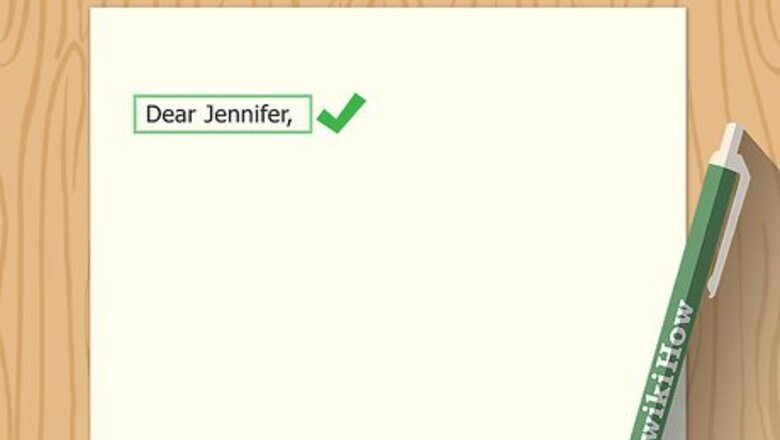
views
Composing the Letter
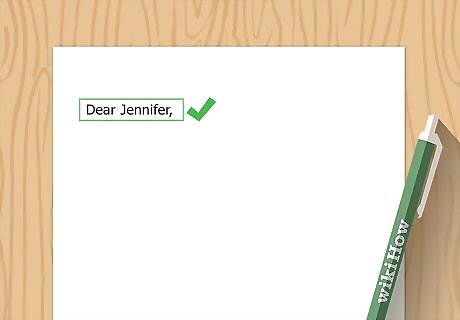
Open with a salutation. Begin your thank you letter by addressing the person in the way that feels most natural. In almost every situation, starting with "Dear [person's name]," is appropriate. Whether the note is for your best friend, your teacher or your mom, this works. If you're looking for something a little more personal, try: "Dearest __," "Hi, __," "My friend," "To my favorite _____,"
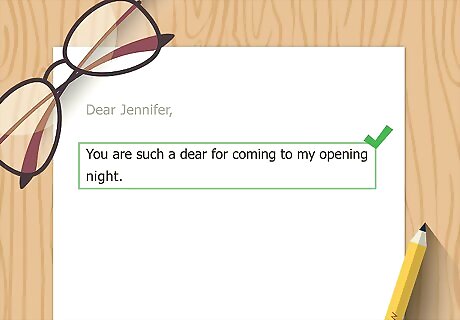
Express your gratitude sincerely. Thank you notes are usually short and to the point, so start by thanking the person right away. Be specific about what you're grateful for. Describing the gift a little will make it clear that you've thought about it and it's something you cherish. "Thank you so much for the darling pair of leggings you gave to Leigh!" "You are such a dear for coming to my opening night." "I am very grateful for your assistance with my senior project this semester." "Without you, I wouldn't be the student, or person, that I am today."
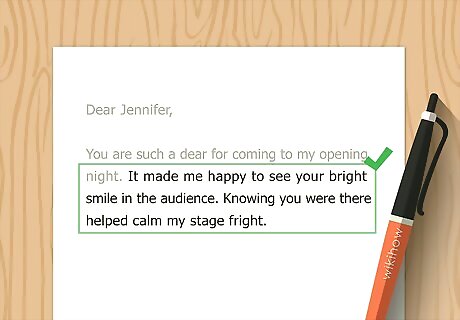
Let them know why their specific gift is cherished. Even if you don't absolutely love the gift, think about the trouble and expense the person went to for your benefit. Show them that this effort, and the gift itself, is important to you. Try to be honest and sincere. "She has been begging me for a pair of leggings lately! They fit her just right, and she has a red dress that matches them perfectly. They'll be put to good use this winter." "You are such a dear for coming to my opening night. It made me happy to see your bright smile in the audience. Knowing you were there helped calm my stage fright." "I am very grateful for your assistance with my senior project this semester. You have a lot of students depending on you, and I really appreciate your taking the time to give me so much individual attention." "You did not have to take the time to mentor and meet with me -- most people wouldn't -- but your passion and patience has left an impact on me that I will never wear out.
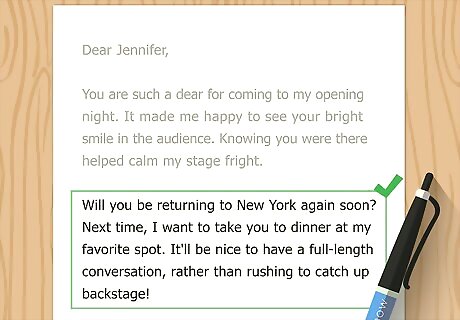
Inquire after the other person or share a little news. Now that you've expressed your gratitude, it's nice to write another few lines that show you care about the person. Ask some questions, and share information about your life. This makes all the difference between a dashed-off note and an actual thank you letter, and the recipient will take even more pleasure in receiving your words. For example, you could write, "It was fun to catch up with you at the party. How are things going with Bobby's soccer team? He has natural talent, that boy. Leigh has been asking about him every day. We can't wait to see you this Christmas." "Will you be returning to New York again soon? Next time, I want to take you to dinner at my favorite spot. It'll be nice to have a full-length conversation, rather than rushing to catch up backstage!" "I wish you the best with your research this summer, and look forward to seeing you at the NSTA conference in the fall." "Best of luck with your new responsibilities and projects. I'm eagerly awaiting the chance to see what you do next, and to keep learning from you from afar."
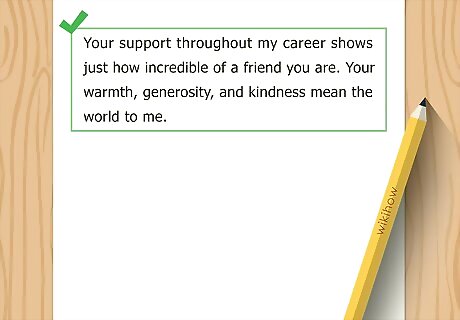
Let them know you appreciate them one last time. To wrap things up nicely, let them know how much you appreciate their friendship and love. You don't even have to bring up the gift again. Just thank them for being them. "Friends like you are the best part of this town, and I'm looking forward to the day we can sit down together and catch up." "Your support throughout my career shows just how incredible of a friend you are. Your warmth, generosity, and kindness mean the world to me." "You give the college a good name, and embody everything I love about my school. I hope I can one day pay it forward to students of my own." "Anytime you want to talk, collaborate, or share a cup of coffee, you know where to find me. A conversation with you is something I could never turn down."
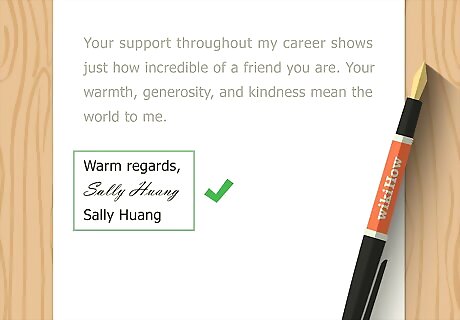
Close the letter. Think about the nature of your relationship and choose the closing that seems most appropriate. If you can't decide, it's fine to just sign your name. Here are a few examples of popular closings: To a loved one: Love, Much love, Hugs and Kisses, All my love, Yours, To a friend: Cheers, Thanks again, Warmly, See you soon, Many thanks, To a colleague: Sincerely, Gratefully yours, Respectfully yours, Best wishes
Choosing Your Format
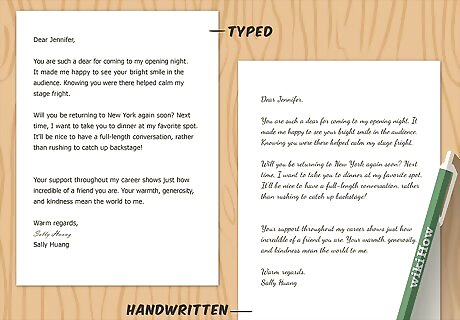
Either handwrite it or type it. Either a handwritten or typed letter is totally acceptable. A handwritten letter will have a slightly more personal look, but a typed letter is better if you're more comfortable that way. What matters is the effort you're making to craft a letter and send it, so don't worry too much about your choice here. If you choose to handwrite it, use a pen with black or blue ink. Write in either print or cursive, as long as your writing is legible. If you choose to type it, use a font that's easy to read, like Times New Roman or Arial. This is especially necessary if you're writing a thank you letter to a professional colleague.
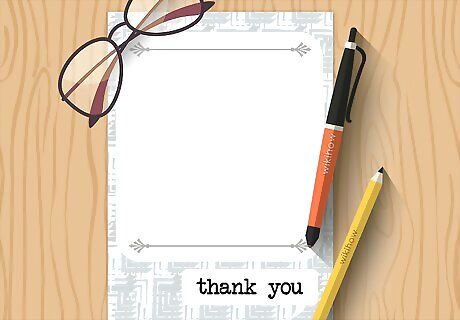
Pick out nice stationery or a card. While dashing off a note on a torn piece of scrap paper demonstrates your interesting character, it's considered more polite to use a nice piece of stationery or a thank you card. If someone went to the trouble of giving you a gift, the nice thing to do is send them your letter in a format that shows you're sincerely grateful. If you go with stationery, it doesn't have to be fancy. Look for heavier-weight paper made with cotton or another high-quality material. It's fine to use stationery with a design or your initials. Packs of thank you cards are sold in stationery shops and drug stores. Consider getting more than one so you'll have cards on hand for next time.
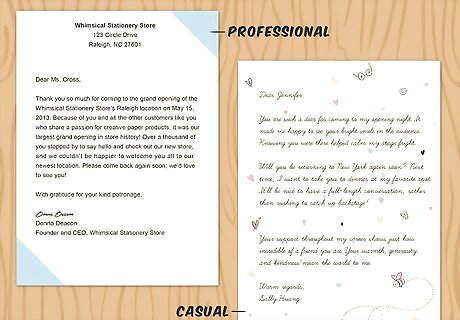
Make it professional or keep it casual. The style of your note will be a little different depending on who's receiving it. Keeping the nature of the gift in mind, think about what type of note would be most appropriate. No matter what, you want to leave the person receiving the note feeling that you're sincerely grateful. For example, if you're sending a thank-you note to your boss, and the workplace setting is pretty formal, you might want to choose high-quality business stationery, type the letter and format it according to the standards for a professional business letter. If the note is for a friend, you can show a little more personality. Write your note on a funny postcard, or make your own cool stationery.
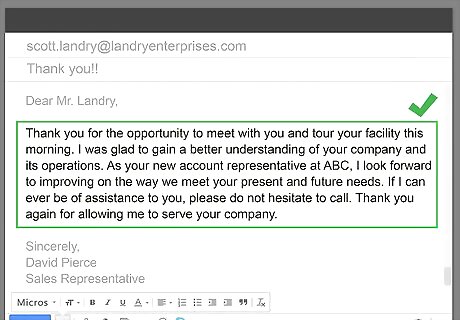
Know when it's appropriate to send an email. While sending a thank-you text message never quite has enough oomph to show how grateful you are, sometimes it's fine to send an email. This is especially true if you're not writing the note in thanks for a physical gift. For example, if your aunt lent an ear when you were upset over breaking up with your boyfriend, you might want to send her a thank-you email in gratitude for her patience and understanding. However, if you need to thank someone for giving you an actual gift or for dedicating a significant amount of time toward helping you, it's better to send a real letter. People realize that it takes effort to write and mail a letter, and that extra time will be appreciated. If you send an email, it should be as well composed and thoughtful as a regular letter would be. In fact, you might want to take even more time making sure it's well written, since you're not going to the trouble of sending it by snail mail.
Following Thank-You Letter Etiquette
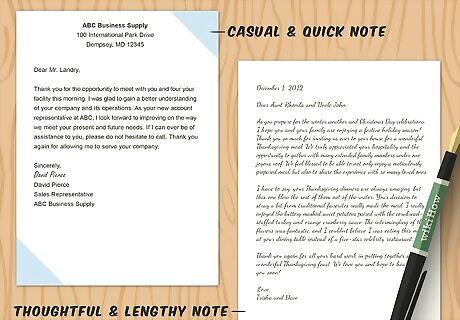
Match the length of the letter to the size of the gift. This is a very general rule that works pretty well in practice. A very thoughtful, expensive gift deserves a thoughtful, rather lengthy letter. A tiny gesture may be thanked with a casual, small gesture in return. Think about how much time, effort and money was put into the gift and match your letter's tone and length appropriately. For example, if someone bought you a $100 wedding present, in addition to flying to your wedding and taking time off work to attend, they deserve a full-blown thank you letter on nice paper or a big thank you card. On the other hand, if you were the recipient of a $5 Secret Santa stocking stuffer, a short, quick note will do.
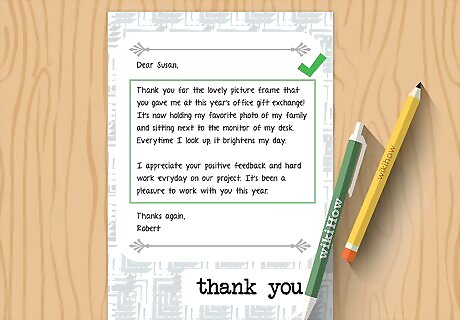
Start halfway down the card if you want. Are you having trouble coming up with enough to fill a whole thank you card? If you bought the type of card that comes folded in half, you don't have to fill up the entire blank space. Instead, you can start on the right half or bottom half of the card and write a letter that fills just half the card. It looks more proper than trailing off and leaving a lot of black space, or super-sizing your handwriting to fill it all up. Of course, take the above rule regarding the length of the letter into account. If the recipient deserves a two-page letter, you'd better match the length to the size of the gift and fill up the entire card.
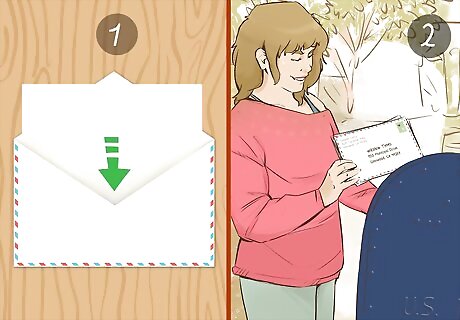
Send it promptly. Try to send out your thank you letter within a few days (or weeks, at the latest) of receiving your gift. That way the person who gave it to you will know you received it and that you're very grateful. Waiting too long is rude, especially if the gift was sent in the mail. The person who sent it might wonder whether it ever arrived. That said, it's never too late to send a thank you note. Even if you send it months later, out of the blue, it's better than never sending one at all. If you wait this long, though, make it a good, long letter!

















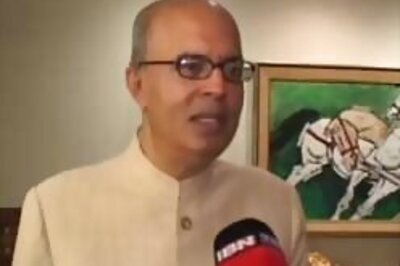

Comments
0 comment